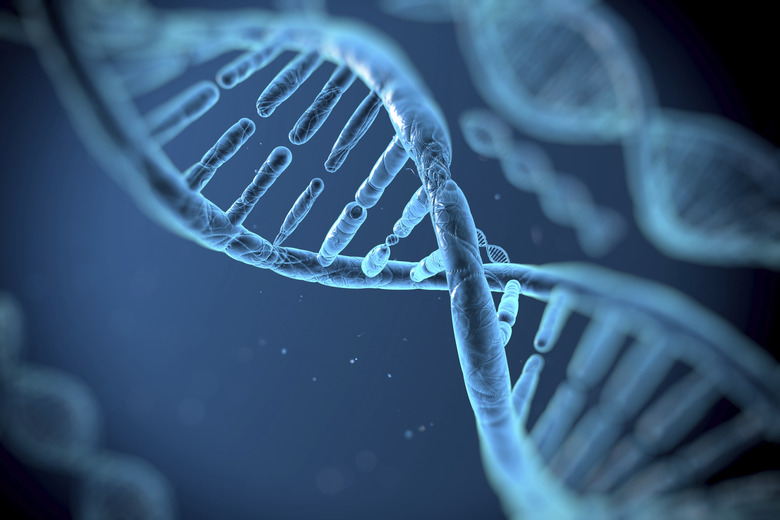What Are Purines And Pyrimidines?
Deoxyribonucleic acid, or DNA, is widely referred to as the "genetic code" and the basis for all life as humans know it. It is found in the nuclei of eukaryotic cells, including your own. A related compound, RNA or ribonucleic acid, is responsible for transferring the code for proteins stored in DNA to the part of the cell where the instructions for making proteins are actually carried out (the ribosome).
Perhaps you have seen a representation of a DNA or RNA strand that includes stretches of letters, such as AGCCCTAG... or UCGGGAUC... Each of these five letters stands for a different nucleotide, and nucleotides come in two fundamental types, heavy in nitrogen and named on the basis of their chemical properties: purine and pyrimidine.
Purines and Pyrimidines in Human Biology
Purines and Pyrimidines in Human Biology
There are four purines that are important in human molecular biology: adenine, guanine, hypoxanthine and xanthine. The first two of these are components of both DNA and RNA. The other two are not incorporated into any nucleic acids as final products, but they are intermediaries in the biochemical reactions in which purine nucleotides are synthesized and broken down.
The four important pyrimidines include cytosine, thymine, uracil and orotic acid. The difference between DNA and RNA is that DNA contains thymine, whereas RNA has uracil in locations corresponding the thymine's placement in DNA.
Purine: Definition
Purine: Definition
A purine is composed of a six-member nitrogen-containing ring and a five-member nitrogen-containing ring joined together, like a hexagon and a pentagon pushed together. Purine bases in DNA and RNA include adenine and guanine and are therefore the best known bases of the category. Purine synthesis involves the modification of a ribose sugar followed by the addition of the component that makes the compound a base.
Pyrimidine: Definition
Pyrimidine: Definition
Pyrimidines have a six-member nitrogen-containing ring, like purines, but no corresponding five-nitrogen ring. These compounds therefore have a longer name but are smaller and lighter in the physical world.
Pyrimidine bases in DNA include cytosine and thymine; pyrimidines in RNA include cytosine and uracil. Pyrimidine synthesis is the reverse of purine synthesis in one way: The free base is made first, and the rest of the molecule is modified into a nucleotide later.
Purine and Pyrimidine Pairing
Purine and Pyrimidine Pairing
DNA is double-stranded, and when split into two parts is used to make RNA. In double-stranded DNA, which looks like a ladder when "unwound," adenine (A) pairs with thymine (T) while cytosine (C) pairs with guanine (G). In RNA, uracil (U) takes the place of T. Thus looking across any one molecule, a purine is always paired with a pyrimidine, which makes sense since this keeps each pair about the same size. Two purines would be far larger than two pyrimidines.
Cite This Article
MLA
Beck, Kevin. "What Are Purines And Pyrimidines?" sciencing.com, https://www.sciencing.com/purines-pyrimidines-5047849/. 25 July 2018.
APA
Beck, Kevin. (2018, July 25). What Are Purines And Pyrimidines?. sciencing.com. Retrieved from https://www.sciencing.com/purines-pyrimidines-5047849/
Chicago
Beck, Kevin. What Are Purines And Pyrimidines? last modified August 30, 2022. https://www.sciencing.com/purines-pyrimidines-5047849/
